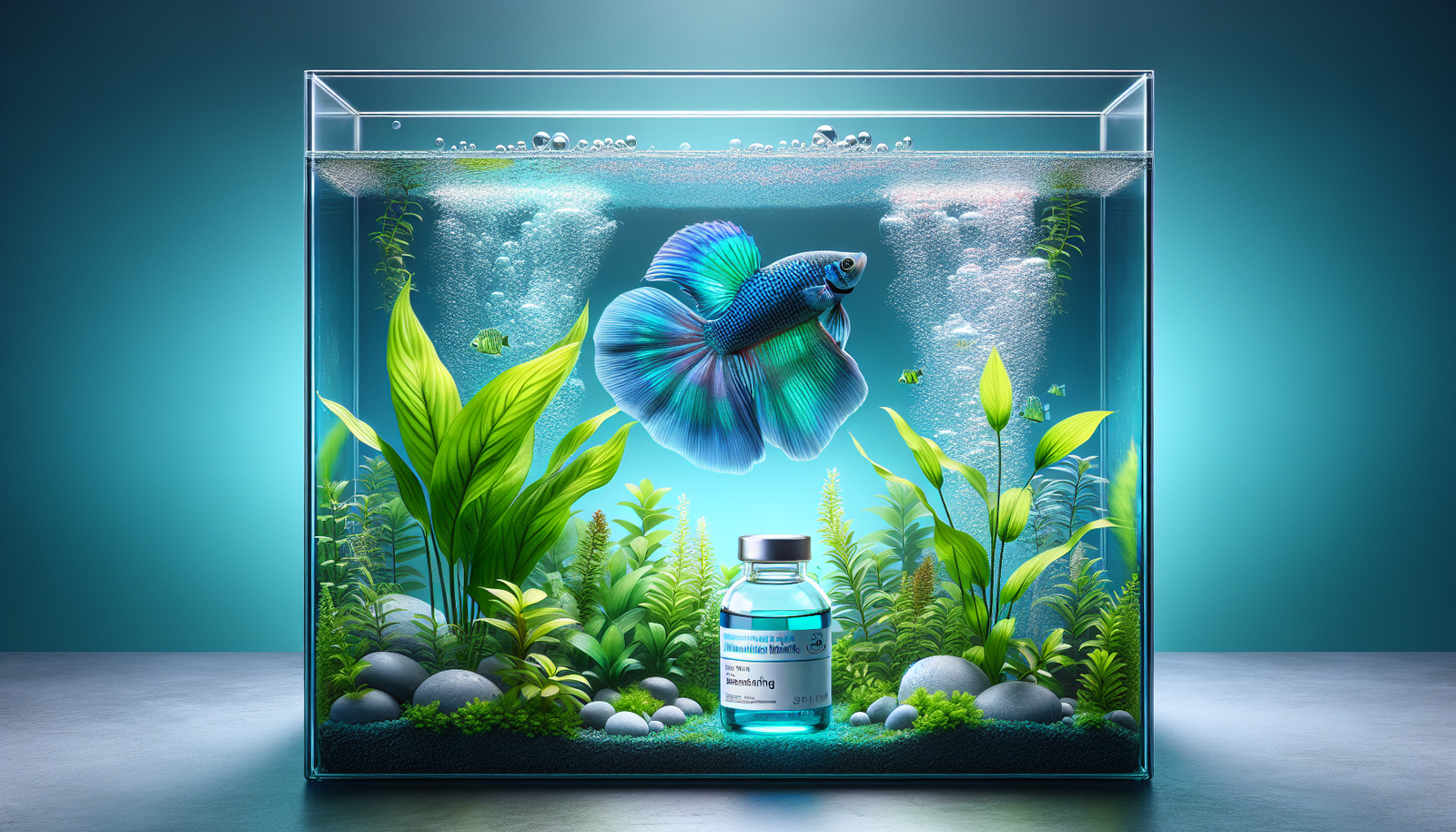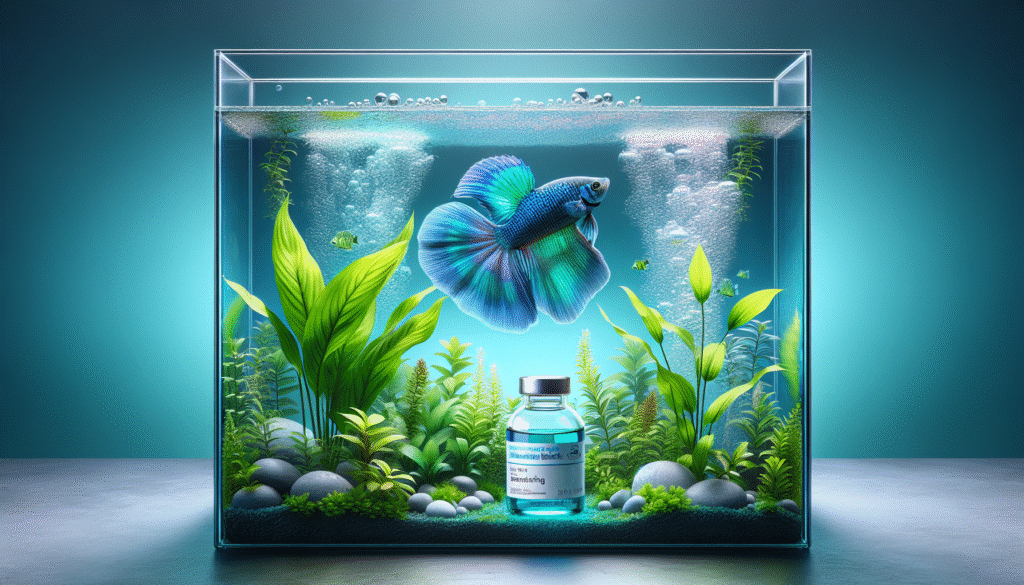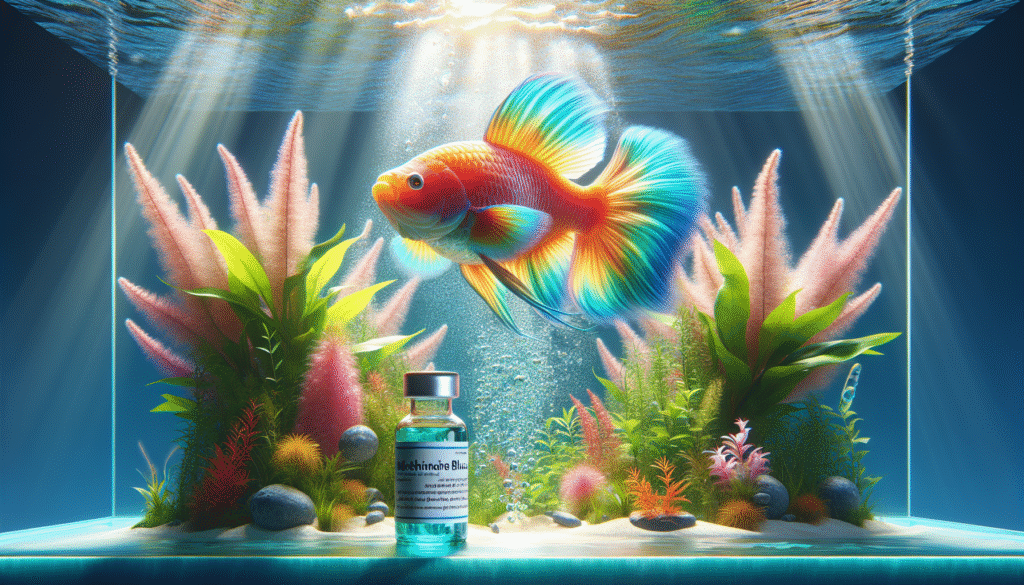
Have you ever wondered how certain compounds can significantly impact the health and well-being of fish in aquaculture or home aquariums? Among these compounds, Methylene Blue stands out as a potent tool for maintaining fish health and treating various ailments. Understanding how to effectively leverage Methylene Blue can ensure your aquatic environments thrive, fostering healthier fish populations.

Understanding Methylene Blue
Methylene Blue is an organic compound with a long history in various fields, including medicine, biology, and aquaculture. Originally synthesized in the 19th century, it has been used as a staining agent and an antifungal treatment. Its applications extend to aquaculture, where it is particularly valued for its efficacy against certain fish diseases and parasites.
Chemical Properties of Methylene Blue
Methylene Blue, chemically known as methylthioninium chloride, exhibits unique properties. It is a phenothiazine derivative, characterized by its vibrant blue hue, which can be striking in aquatic environments.
- Molecular Formula: C16H18ClN3S
- Molecular Weight: 319.85 g/mol
- Solubility: Highly soluble in water, providing an effective means of application in aquatic systems.
These properties make Methylene Blue not just visually appealing but also practical for treating waterborne ailments in fish.
Benefits of Using Methylene Blue
Utilizing Methylene Blue within aquaculture yields numerous benefits, which can greatly enhance the health of your fish. Recognizing these advantages will help you apply this compound appropriately and effectively.
Antifungal and Antiparasitic Properties
One of the most significant benefits of Methylene Blue is its antifungal and antiparasitic capabilities. Many fish are susceptible to diseases caused by fungi, bacteria, and parasites.
-
Fungal Infections: These can range from mild saprolegniasis to severe diseases that threaten fish populations. Methylene Blue can help eliminate these fungi in both eggs and adult fish.
-
Parasitic Infestations: It has shown effectiveness against monogeneans and other external parasites, reducing fish stress and mortality rates.
Improving Oxygen Transport
Methylene Blue has been known to improve hemoglobin function and consequently enhance oxygen transport in the bloodstream of fish. In conditions where oxygen levels may be low, such as during high-stress events or crowded situations, this property can be particularly beneficial.
Safe Application of Methylene Blue
While Methylene Blue offers several advantages, it is crucial to apply it correctly to ensure safety for your aquatic population. Overuse or incorrect dosages can lead to toxicity, harming the fish instead of helping them.
Recommended Dosages
The appropriate dosage of Methylene Blue depends on its application purpose. Here are general guidelines:
| Application Type | Recommended Dosage |
|---|---|
| Preventative Treatment | 0.1 – 0.5 mg/L |
| Fungal Infection Treatment | 1 – 2 mg/L |
| Parasitic Infestation Treatment | 1 mg/L |
Always start with the lowest effective dose, gradually increasing if necessary while closely monitoring fish health and behavior.
Treatment Duration
The duration for which Methylene Blue should be present in the water also varies depending on the treatment goal and the extent of the infection. Typical treatment lasts from a few hours up to several days.
-
Continuous Treatment: For prolonged exposures, water changes should occur regularly to prevent the buildup of unnecessary toxins while maintaining therapeutic levels of Methylene Blue.
-
Monitoring: Be vigilant. Observe your fish for signs of recovery, stress, or adverse reactions during the treatment period.
Calculating Dosages
Accurate dosing is the key to effective treatment. Here’s how you can calculate the appropriate amount of Methylene Blue for your aquarium or pond.
Step-by-Step Dosage Calculation
-
Determine Water Volume: Measure the total volume of water in your tank or pond in liters or gallons.
-
Identify the Desired Concentration: Choose an appropriate concentration based on the treatment type.
-
Use the Formula: [ \text = \text \times \text ]
For example, if you have a 100-liter aquarium and plan to administer a concentration of 0.5 mg/L, you would require: [ 100 , \text \times 0.5 , \text = 50 , \text ]
Dissolving Methylene Blue
Methylene Blue typically comes in powder or liquid form. If using powder, dissolve the measured amount in a small amount of water before adding it to the tank. This practice ensures an even distribution and helps avoid localized concentrations that could be harmful to fish.

Best Practices for Methylene Blue Use
Realizing the full benefits of Methylene Blue requires an understanding of best practices when implementing its use in your fish health protocol.
Compatibility with Other Treatments
When using Methylene Blue, you should be cautious about combining it with other medications, as interactions might render treatments ineffective. Always consult product labels and professionals to avoid adverse reactions.
Monitoring Water Quality
Methylene Blue can impact water chemistry. Regularly check parameters like pH, ammonia, nitrite, and nitrate levels to ensure your fish’s environment remains healthy.
Regular Water Changes
Periodic water changes are necessary during treatment to enhance water quality and reduce toxin buildup. A 20%-50% water change can aid in maintaining optimal conditions while ensuring that therapeutic levels of Methylene Blue remain effective.
Common Fish Conditions Treated with Methylene Blue
Certain conditions are more easily addressed with Methylene Blue’s application. Identifying these conditions can help you take swift action and improve fish health.
Ichthyophthirius multifiliis (Ich)
Ich is a common parasitic infection causing visible white cysts on a fish’s skin and gills. Methylene Blue can effectively manage and treat this parasitic infestation, providing a clear advantage in its application.
Fungal Infections
As previously mentioned, Methylene Blue is highly effective against fungal infections, particularly in fish eggs. It helps eliminate fungus and ensures healthy hatch rates, especially in breeding scenarios.
Stress Reduction
In stressful situations, such as transportation or environmental changes, Methylene Blue can aid in reducing stress levels. Its ability to enhance oxygen transport can alleviate some stress-related symptoms in fish.
Identifying and Dealing With Adverse Reactions
Despite its benefits, fish can exhibit adverse reactions to Methylene Blue, especially if used improperly. Recognizing these signs early can make all the difference.
Potential Side Effects
-
Respiratory Distress: If fish exhibit rapid gill movements or surface gasping, it may indicate low oxygen levels or sensitivity to Methylene Blue.
-
Color Changes: Methylene Blue stains fish, leading to temporary color changes. If this persists or worsens, seek professional advice.
-
Behavioral Changes: Reclusive behavior or lack of appetite may signal distress.
What to Do
If you observe any adverse effects, consider the following actions:
-
Immediate Water Changes: Execute a series of water changes to dilute Methylene Blue concentration.
-
Separation: If symptoms persist, separate affected fish into a treatment or quarantine tank to monitor their recovery without further stress from tank mates.
-
Consult an Expert: When in doubt, seek guidance from an aquatic veterinarian or aquaculture specialist.
Conclusion
Understanding how to leverage Methylene Blue for fish health involves comprehending its benefits, proper application, and monitoring for adverse reactions. While Methylene Blue is a powerful tool in the aquaculture toolkit, knowledge and caution are key to using it effectively. By applying these insights, you can optimize your fish’s health and ensure a thriving aquatic environment.
With the right approach, Methylene Blue can take a pivotal role in your fish care regimen, establishing a healthier, more vibrant aquatic life for your enjoyment and the welfare of the fish.